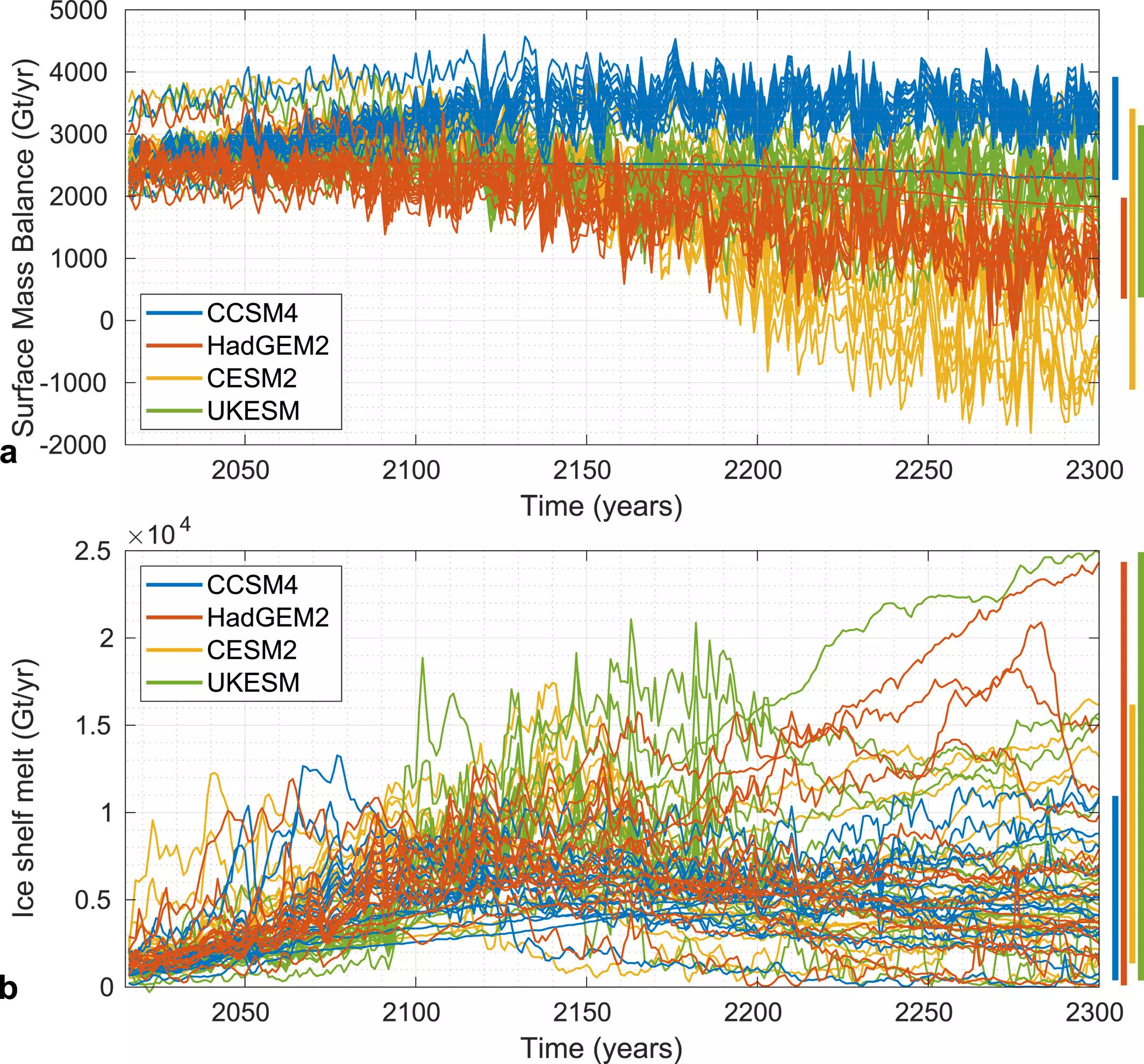A pivotal study led by Dartmouth College, involving over 50 leading climate scientists from around the globe, sheds unprecedented light on the fate of Antarctica’s ice sheets in the face of climate change. Published in the journal Earth’s Future, this study offers the first definitive forecasts on how carbon emissions are set to impact Antarctica’s ice mass over the upcoming three centuries. The alarming consensus is that the gradual melting observed today is only the prelude to accelerated ice loss, particularly after 2100, underscoring a future of dire consequences for global sea levels.
The research reveals that, while current atmospheric carbon levels may only result in moderate ice loss through the 21st century, the future is bleak. The collaboration pooled insights from 16 individual ice-sheet models, mapping their predictions together. The unified findings exhibit a troubling pattern: under the prevailing emissions trajectory, a significant retreat of ice in West Antarctica is anticipated to begin early in the next century. This shift has profound implications, with projections indicating a potential rise in global sea levels by as much as 5.5 feet by the year 2200.
The study goes further by exploring scenarios through 2300, where the stakes ascend dramatically. It posits that if current emission levels persist, we could witness a near-total collapse of the Antarctic ice sheets. Hélène Seroussi, the study’s lead author and an associate professor at Dartmouth’s Thayer School of Engineering, emphasizes a crucial detail: the lack of longstanding studies focused on the post-2100 period. While policymakers are readily informed of risks until 2100, they often overlook the irrevocable consequences that might ensue thereafter.
Mathematical modeling executed in the study specifically delineates outcomes not just under current emissions but also maps potential futures under both high and low emission scenarios. This projection indicates that the time to act is now. The difference between high and low emissions scenarios in their contribution to sea level rise becomes starkly pronounced after 2100. The researchers underscore that the urgency to reduce carbon emissions is not merely an ethical endeavor; it is essential for safeguarding future generations and their environments.
The various ice-flow models utilized in the research revealed that although the timing of ice retreat might differ, there exists a crucial agreement among them regarding the speed and inevitability of large-scale ice loss once triggered. Seroussi points out, “Once these substantial changes commence, the models predict a relentless progression; there will be no mechanism to halt or mitigate it.” This alarming consensus raises a glaring challenge: large basins within West Antarctica may face near-complete collapse long before we reach the year 2200.
Determining the exact timeline of this calamitous event hinges significantly on the future trajectory of greenhouse gas emissions. This interplay signals an immediate need for concerted efforts in emission reductions, as delaying action could lead to irreversible losses for some of Antarctica’s most vulnerable regions.
This study not only offers a stark warning but also highlights the potential for collaborative scientific endeavors in understanding the complexities of ice-sheet modeling. Researchers can leverage insights from this comprehensive work to enhance predictive capabilities, especially in areas demonstrating significant uncertainties, such as the Greenland ice sheet. The lessons gleaned from addressing disparities in projections among diverse models can be invaluable in honing future predictions.
This pioneering research stands as a clarion call. The collaboration of over fifty scientists has woven a detailed fabric of projections that cannot be ignored. As we confront the reality of climate change, the fate of Antarctica’s majestic ice sheets hangs in the balance. The urgency for action could not be clearer; we must embrace a global commitment to reduce carbon emissions before the irreversible cascades of climate impacts spiral further out of control.

